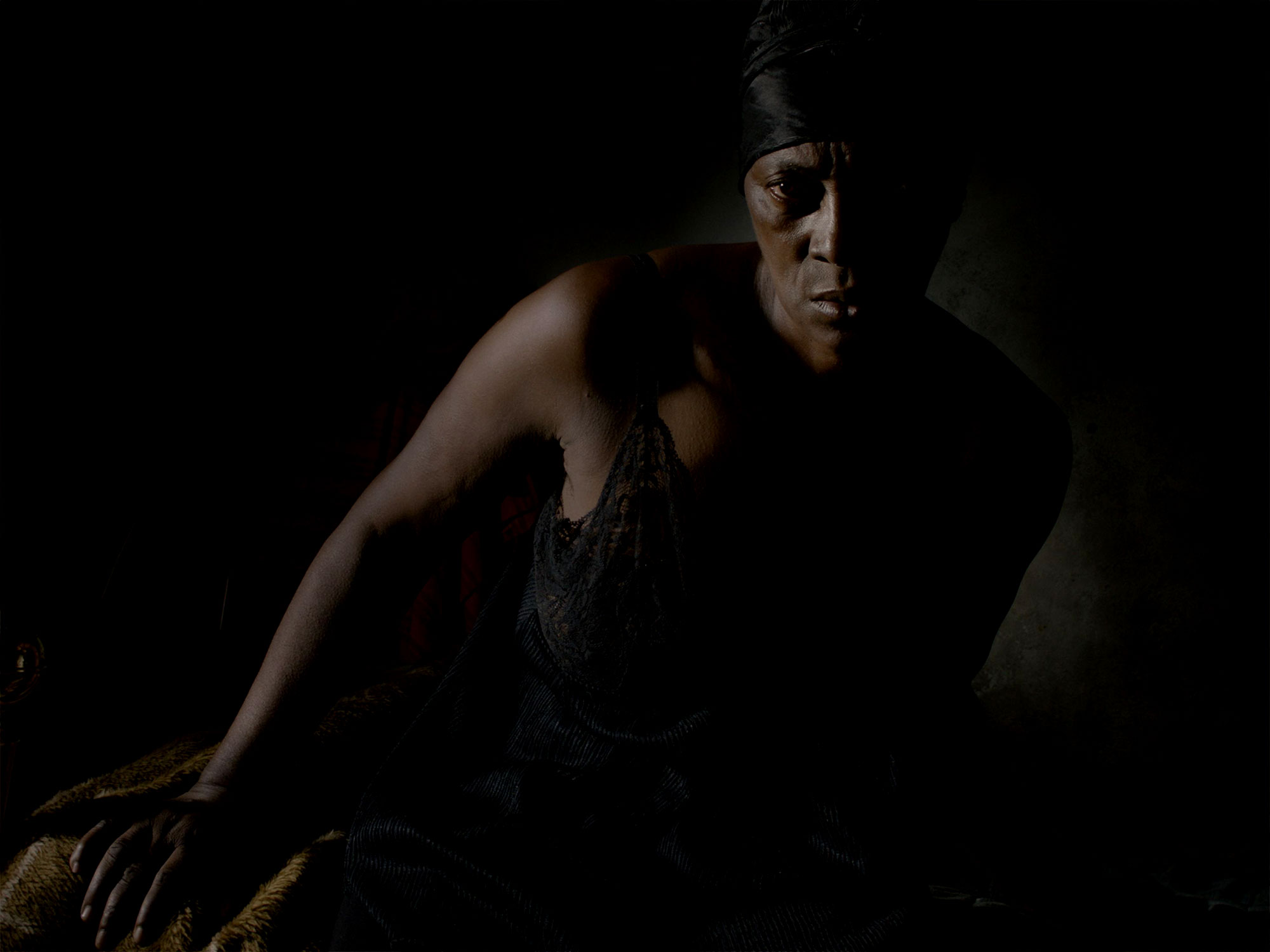
Pedro Costa’s films are epic in scope, beginning with the lighting; pushed to extremities of brightness and darkness which suggest the origins of all human drama. Nocturnal frames are so voluptuously dark – he films in what Wilco’s Jeff Tweedy refers to as, “the Bible-black predawn,” when the only ones stirring are the maids at the bus stop – that you have to scan the shadows to see where people begin and their surroundings end. Make the effort.
In low-angle chiaroscuro close-ups, people appear as if transfixed by floodlights, and deliver husky soliloquies derived from the stories Costa learns from his nonvocational actors. Just as eloquent are faces like that of Vitalina Varela’s title character, played by a woman of the same name, who arrives in Portugal from Cape Verde too late for her husband’s funeral. Against her jet-black widow’s weeds of leather jacket and head scarf, the planes of her face, the dome of her head, the ridge of her nose appear cast in relief. She is a monument to herself.
After 1997’s Ossos, made with residents of Lisbon’s Fontaínhas slum, Costa shifted to a more stripped-down method, with a tiny crew and more collaborative narratives for the semidocumentary In Vanda’s Room, from 2002. He got closer to the world just as it was being demolished, with Fontaínhas’ residents relocated to the brutalist midrise towers we see in 2006’s Colossal Youth. A static camera, slow pacing, sculptural framings and Caravaggio lighting grant Costa’s characters rootedness, even as he also acknowledges their displacement.
People in Costa films carry many times and places inside them. In 2014’s Horse Money, his totemic actor Ventura wanders a hospital, lost in a maze of memories of postcolonial migration and encounters with his exploited comrades. This includes Vitalina Varela, in her first appearance in a Costa film, as a Cape Verdean arriving in Lisbon after news of her husband’s death, suggesting that Horse Money’s elusive chronology also extends into the future, to this new film.
Costa reinvents his style with every film; Vitalina Varela features his most linear, legible plot (a word not used lightly). Vitalina disembarks from the plane, barefoot, in Portugal at last to settle the affairs of the husband who left her behind decades ago. In the concrete shantytown of Cova da Moura on Lisbon’s outskirts, weary men hover like crows, and tell her of her husband’s lonely, alienated life in the foreign land that now holds his body, over the four decades she spent resenting him for abandoning his home for a new one he never found.
Vitalina Varela is an inversion of Graham Greene’s ‘The Third Man’, with a stranger in a strange land on the trail of an old friend, hearing new stories that gradually soften her heart to him. In another Greene-ish touch, Ventura appears as the anguished parish priest, his quavering faith represented by the same tremor that afflicted him in Horse Money.
It’s simultaneously sad to see Ventura – whom we’ve known since Colossal Youth – as his body wanes, and remarkable to see the performance he gives, imbuing new fictions with haunting depth. Costa’s cinema is down-to-earth and bigger than life.
The post Vitalina Varela appeared first on Little White Lies.
![Forest Essentials [CPV] WW](https://s3-us-west-2.amazonaws.com/pcw-uploads/logos/forest-essentials-promo-codes-coupons.png)
0 comments